You're👏not👏a👏 Real 👏astronomer👏 Until 👏you've 👏shoved 👏all👏 9 👏planets
you're👏not👏a👏 real 👏astronomer👏 until 👏you've 👏shoved 👏all👏 9 👏planets 👏up 👏your👏 ass
More Posts from Littlecadet-biguniverse and Others

The remnants of a supernova, which usually leaves behind a neutron star. However, no such x-rays have been discovered. Could this be the youngest black hole in the milky way?

Night Sky Over Mt. Fuji - Jan. 2016
js

Saturn in three bands of infrared light.

Panorama from the Apollo 15 mission

A HD Sweep Of Pluto!
Click on the image above to see a HD sweep of the surface of Pluto from NASA’s New Horizons Spacecraft! This is a short post made to accompany my other Pluto post here!
Credits: NASA/New Horizons/Jhu

Wings of a butterfly nebula.
Image Credit: Hubble Legacy Archive, NASA, ESA - Processing: Judy Schmidt
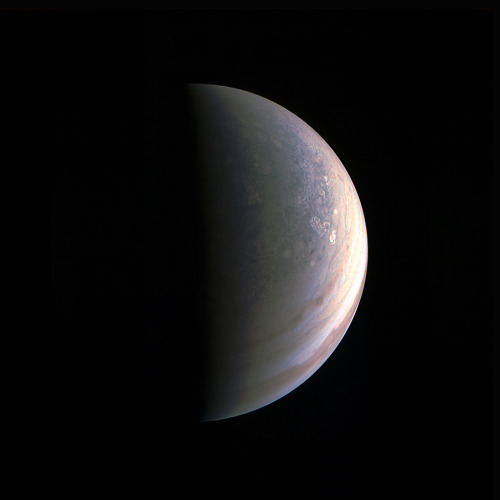
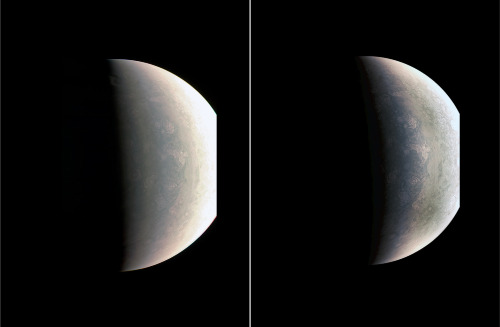
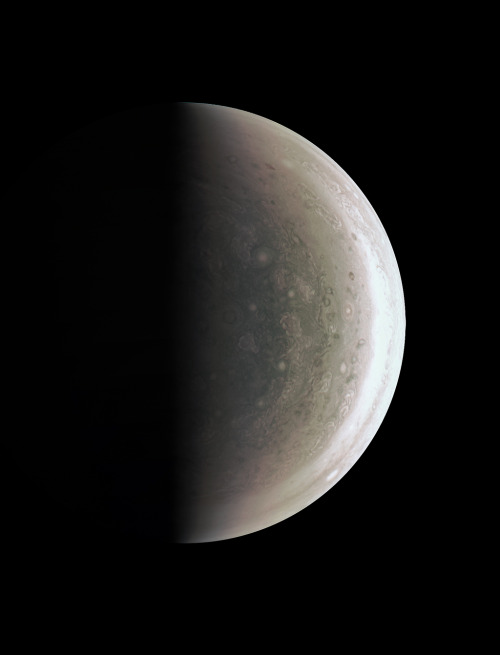
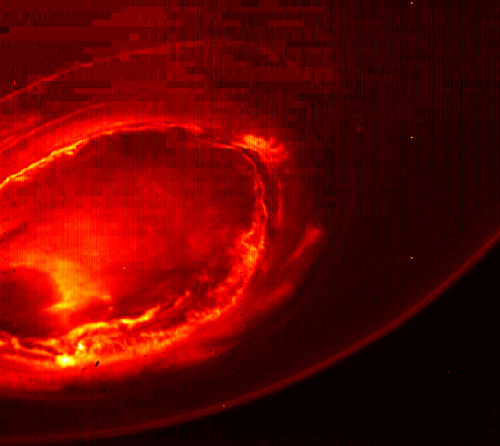
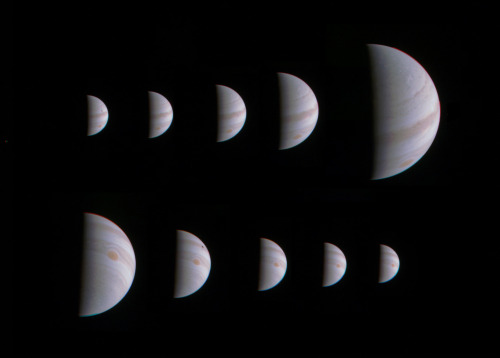
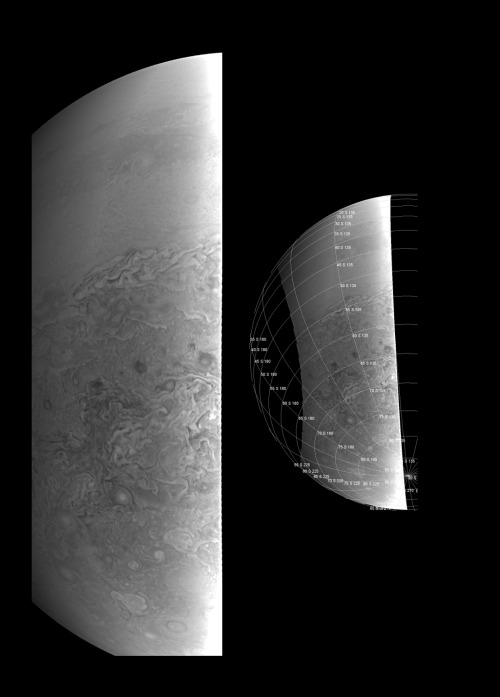
Jupiter’s North Pole Unlike Anything Encountered in Solar System
NASA’s Juno spacecraft has sent back the first-ever images of Jupiter’s north pole, taken during the spacecraft’s first flyby of the planet with its instruments switched on. The images show storm systems and weather activity unlike anything previously seen on any of our solar system’s gas-giant planets.
Juno successfully executed the first of 36 orbital flybys on Aug. 27 when the spacecraft came about 2,500 miles (4,200 kilometers) above Jupiter’s swirling clouds. The download of six megabytes of data collected during the six-hour transit, from above Jupiter’s north pole to below its south pole, took one-and-a-half days. While analysis of this first data collection is ongoing, some unique discoveries have already made themselves visible.
“First glimpse of Jupiter’s north pole, and it looks like nothing we have seen or imagined before,” said Scott Bolton, principal investigator of Juno from the Southwest Research Institute in San Antonio. “It’s bluer in color up there than other parts of the planet, and there are a lot of storms. There is no sign of the latitudinal bands or zone and belts that we are used to – this image is hardly recognizable as Jupiter. We’re seeing signs that the clouds have shadows, possibly indicating that the clouds are at a higher altitude than other features.”
One of the most notable findings of these first-ever pictures of Jupiter’s north and south poles is something that the JunoCam imager did not see.
“Saturn has a hexagon at the north pole,” said Bolton. “There is nothing on Jupiter that anywhere near resembles that. The largest planet in our solar system is truly unique. We have 36 more flybys to study just how unique it really is.”
Along with JunoCam snapping pictures during the flyby, all eight of Juno’s science instruments were energized and collecting data. The Jovian Infrared Auroral Mapper (JI-RAM), supplied by the Italian Space Agency, acquired some remarkable images of Jupiter at its north and south polar regions in infrared wavelengths.
“JIRAM is getting under Jupiter’s skin, giving us our first infrared close-ups of the planet,” said Alberto Adriani, JIRAM co-investigator from Istituto di Astrofisica e Planetologia Spaziali, Rome. “These first infrared views of Jupiter’s north and south poles are revealing warm and hot spots that have never been seen before. And while we knew that the first ever infrared views of Jupiter’s south pole could reveal the planet’s southern aurora, we were amazed to see it for the first time. No other instruments, both from Earth or space, have been able to see the southern aurora. Now, with JIRAM, we see that it appears to be very bright and well structured. The high level of detail in the images will tell us more about the aurora’s morphology and dynamics.”
Among the more unique data sets collected by Juno during its first scientific sweep by Jupiter was that acquired by the mission’s Radio/Plasma Wave Experiment (Waves), which recorded ghostly- sounding transmissions emanating from above the planet. These radio emissions from Jupiter have been known about since the 1950s but had never been analyzed from such a close vantage point.
“Jupiter is talking to us in a way only gas-giant worlds can,” said Bill Kurth, co-investigator for the Waves instrument from the University of Iowa, Iowa City. “Waves detected the signature emissions of the energetic particles that generate the massive auroras which encircle Jupiter’s north pole. These emissions are the strongest in the solar system. Now we are going to try to figure out where the electrons come from that are generating them.”
The Juno spacecraft launched on Aug. 5, 2011, from Cape Canaveral, Florida and arrived at Jupiter on July 4, 2016. JPL manages the Juno mission for the principal investigator, Scott Bolton, of Southwest Research Institute in San Antonio. Juno is part of NASA’s New Frontiers Program, which is managed at NASA’s Marshall Space Flight Center in Huntsville, Alabama, for NASA’s Science Mission Directorate. Lockheed Martin Space Systems, Denver, built the spacecraft. Caltech in Pasadena, California, manages JPL for NASA.
IMAGE 1….As NASA’s Juno spacecraft closed in on Jupiter for its Aug. 27, 2016 pass, its view grew sharper and fine details in the north polar region became increasingly visible. The JunoCam instrument obtained this view on August 27, about two hours before closest approach, when the spacecraft was 120,000 miles (195,000 kilometers) away from the giant planet (i.e., for Jupiter’s center). Unlike the equatorial region’s familiar structure of belts and zones, the poles are mottled with rotating storms of various sizes, similar to giant versions of terrestrial hurricanes. Jupiter’s poles have not been seen from this perspective since the Pioneer 11 spacecraft flew by the planet in 1974.
IMAGE 2….Storm systems and weather activity unlike anything encountered in the solar system are on view in these color images of Jupiter’s north polar region from NASA’s Juno spacecraft. Two versions of the image have been contrast-enhanced differently to bring out detail near the dark terminator and near the bright limb. The JunoCam instrument took the images to create this color view on August 27, when the spacecraft was about 48,000 miles (78,000 kilometers) above the polar cloud tops. A wavy boundary is visible halfway between the grayish region at left (closer to the pole and the nightside shadow) and the lighter-colored area on the right. The wavy appearance of the boundary represents a Rossby wave – a north-south meandering of a predominantly east-west flow in an atmospheric jet. This may be caused by a difference in temperature between air to the north and south of this boundary, as is often the case with such waves in Earth’s atmosphere. The polar region is filled with a variety of discrete atmospheric features. Some of these are ovals, but the larger and brighter features have a “pinwheel” shape reminiscent of the shape of terrestrial hurricanes. Tracking the motion and evolution of these features across multiple orbits will provide clues about the dynamics of the Jovian atmosphere. This image also provides the first example of cloud shadowing on Jupiter: near the top of the image, a high cloud feature is seen past the normal boundary between day and night, illuminated above the cloud deck below. While subtle color differences are visible in the image, some of these are likely the result of scattered light within the JunoCam optics. Work is ongoing to characterize these effects.
IMAGE 3….This image from NASA’s Juno spacecraft provides a never-before-seen perspective on Jupiter’s south pole. The JunoCam instrument acquired the view on August 27, 2016, when the spacecraft was about 58,700 miles (94,500 kilometers) above the polar region. At this point, the spacecraft was about an hour past its closest approach, and fine detail in the south polar region is clearly resolved. Unlike the equatorial region’s familiar structure of belts and zones, the poles are mottled by clockwise and counterclockwise rotating storms of various sizes, similar to giant versions of terrestrial hurricanes. The south pole has never been seen from this viewpoint, although the Cassini spacecraft was able to observe most of the polar region at highly oblique angles as it flew past Jupiter on its way to Saturn in 2000
IMAGE 4….This infrared image gives an unprecedented view of the southern aurora of Jupiter, as captured by NASA’s Juno spacecraft on August 27, 2016. The planet’s southern aurora can hardly be seen from Earth due to our home planet’s position in respect to Jupiter’s south pole. Juno’s unique polar orbit provides the first opportunity to observe this region of the gas-giant planet in detail. Juno’s Jovian Infrared Auroral Mapper (JIRAM) camera acquired the view at wavelengths ranging from 3.3 to 3.6 microns – the wavelengths of light emitted by excited hydrogen ions in the polar regions. The view is a mosaic of three images taken just minutes apart from each other, about four hours after the perijove pass while the spacecraft was moving away from Jupiter.
IMAGE 5….This montage of 10 JunoCam images shows Jupiter growing and shrinking in apparent size before and after NASA’s Juno spacecraft made its closest approach on August 27, 2016, at 12:50 UTC. The images are spaced about 10 hours apart, one Jupiter day, so the Great Red Spot is always in roughly the same place. The small black spots visible on the planet in some of the images are shadows of the large Galilean moons. The images in the top row were taken during the inbound leg of the orbit, beginning on August 25 at 13:15 UTC when Juno was 1.4 million miles (2.3 million kilometers) away from Jupiter, and continuing to August 27 at 04:45 UTC when the spacecraft was 430,000 miles (700,000 kilometers) away. The images in the bottom row were obtained during the outbound leg of the orbit. They begin on August 28 at 00:45 UTC when Juno was 750,000 miles (920,000 kilometers) away and continue to August 29 at 16:45 UTC when the spacecraft was 1.6 million miles (2.5 million kilometers) away.
IMAGE 6….This image provides a close-up view of Jupiter’s southern hemisphere, as seen by NASA’s Juno spacecraft on August 27, 2016. The JunoCam instrument captured this image with its red spectral filter when the spacecraft was about 23,600 miles (38,000 kilometers) above the cloud tops. The image covers an area from close to the south pole to 20 degrees south of the equator, centered on a longitude at about 140 degrees west. The transition between the banded structures near the equator and the more chaotic polar region (south of about 65 degrees south latitude) can be clearly seen. The smaller version at right of this image shows the same view with a latitude/longitude grid overlaid. This image has been processed to remove shading effects near the terminator – the dividing line between day and night – caused by Juno’s orbit.
-
 sharman-addict liked this · 6 years ago
sharman-addict liked this · 6 years ago -
 bluejaywvy liked this · 6 years ago
bluejaywvy liked this · 6 years ago -
 thenebulaqueen reblogged this · 6 years ago
thenebulaqueen reblogged this · 6 years ago -
 thenebulaqueen liked this · 6 years ago
thenebulaqueen liked this · 6 years ago -
 sea-anemlly reblogged this · 6 years ago
sea-anemlly reblogged this · 6 years ago -
 sea-anemlly liked this · 6 years ago
sea-anemlly liked this · 6 years ago -
 oh-honey7 reblogged this · 7 years ago
oh-honey7 reblogged this · 7 years ago -
 hyperionheights reblogged this · 7 years ago
hyperionheights reblogged this · 7 years ago -
 hyperionheights liked this · 7 years ago
hyperionheights liked this · 7 years ago -
 cosmiccxx-blog reblogged this · 7 years ago
cosmiccxx-blog reblogged this · 7 years ago -
 key--lime--pie liked this · 7 years ago
key--lime--pie liked this · 7 years ago -
 fishingforcrows liked this · 7 years ago
fishingforcrows liked this · 7 years ago -
 looksmokin reblogged this · 7 years ago
looksmokin reblogged this · 7 years ago -
 looksmokin liked this · 7 years ago
looksmokin liked this · 7 years ago -
 it-mattered-to-that-one liked this · 7 years ago
it-mattered-to-that-one liked this · 7 years ago -
 driita reblogged this · 7 years ago
driita reblogged this · 7 years ago -
 gothicromantic reblogged this · 7 years ago
gothicromantic reblogged this · 7 years ago -
 fullmetalvalchemist liked this · 7 years ago
fullmetalvalchemist liked this · 7 years ago -
 phaedinphaedout reblogged this · 7 years ago
phaedinphaedout reblogged this · 7 years ago -
 bootydeep reblogged this · 7 years ago
bootydeep reblogged this · 7 years ago -
 bootydeep liked this · 7 years ago
bootydeep liked this · 7 years ago -
 wildthunder312 reblogged this · 7 years ago
wildthunder312 reblogged this · 7 years ago -
 wildthunder312 liked this · 7 years ago
wildthunder312 liked this · 7 years ago -
 sugar-n-stardustdeactivated21919 reblogged this · 7 years ago
sugar-n-stardustdeactivated21919 reblogged this · 7 years ago -
 phaedinphaedout liked this · 7 years ago
phaedinphaedout liked this · 7 years ago -
 lamb-tumors reblogged this · 7 years ago
lamb-tumors reblogged this · 7 years ago -
 megalunalexi-aesthetic liked this · 7 years ago
megalunalexi-aesthetic liked this · 7 years ago -
 bat-bestie reblogged this · 7 years ago
bat-bestie reblogged this · 7 years ago -
 tuskuoh reblogged this · 7 years ago
tuskuoh reblogged this · 7 years ago -
 nerdypeanutenemy-blog liked this · 7 years ago
nerdypeanutenemy-blog liked this · 7 years ago -
 uuuuuuugggggggghhhhhhhhh liked this · 7 years ago
uuuuuuugggggggghhhhhhhhh liked this · 7 years ago -
 honeysucclee reblogged this · 7 years ago
honeysucclee reblogged this · 7 years ago -
 honeysucclee liked this · 7 years ago
honeysucclee liked this · 7 years ago -
 iceicefetus reblogged this · 7 years ago
iceicefetus reblogged this · 7 years ago -
 endlessdreams-s reblogged this · 7 years ago
endlessdreams-s reblogged this · 7 years ago
GREETINGS FROM EARTH! Welcome to my space blog! Let's explore the stars together!!!
144 posts


